Best fall flowers and plants: 14 top choices for late color
These fall flowers and plants will bring vibrant color to your beds and borders throughout the autumn months

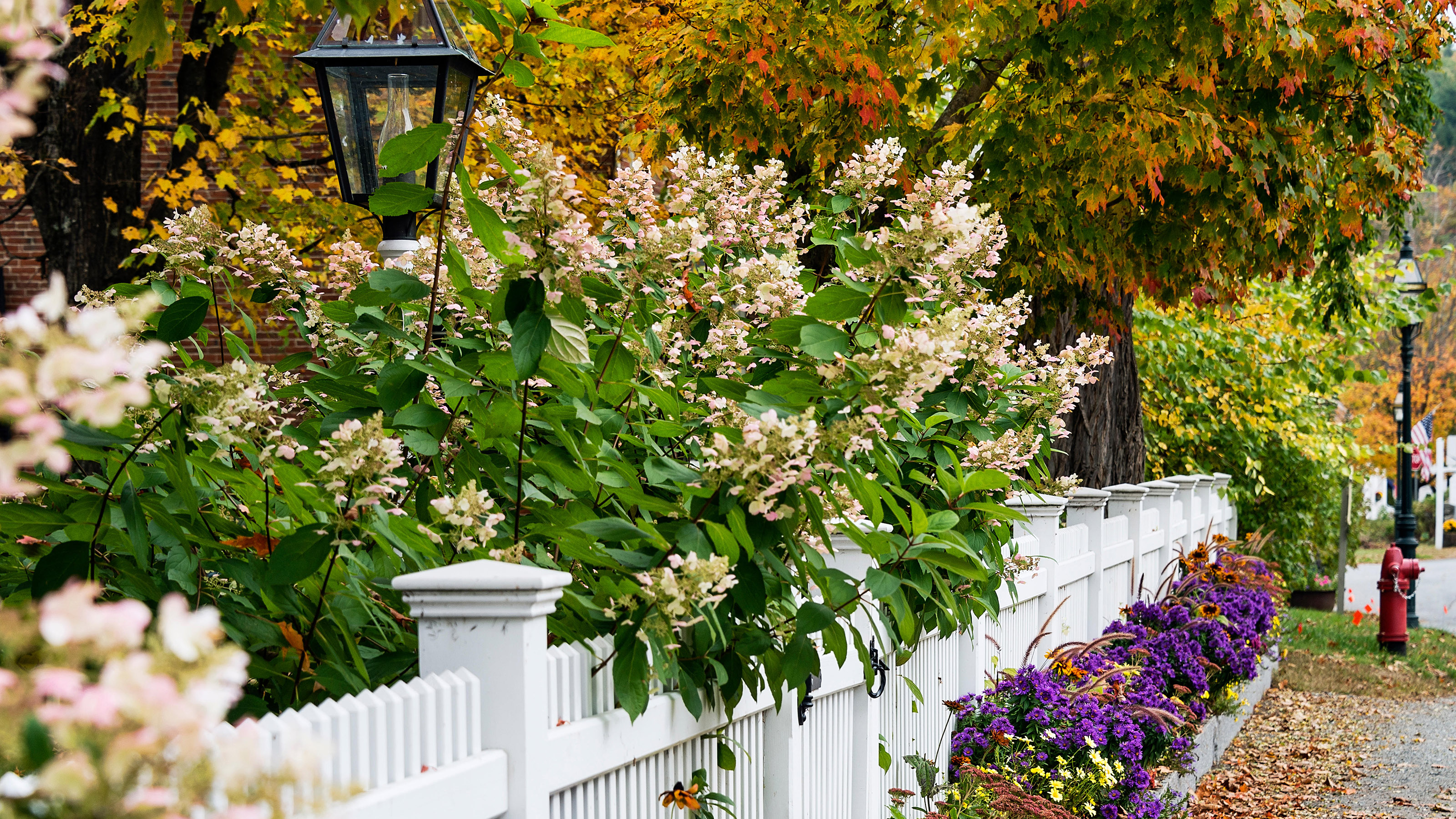
Fall flowers and plants signal a precious season in the garden. When rain moistens soil after summer drought, and temperatures drop as a relief from heatwaves. Soils are workable and gardeners can enjoy toiling gently against a backdrop of glowing leaf tints and fresh blooms.
Each plant has its own character and favorite spot in the garden, from the drooping coneflower that suits loose, prairie style beds to the glistening lily-like blooms of Nerine bowdenii ideal for a narrow sunny border at the foot of a wall.
A common mistake is to fill small yards with lots of tiny plants, when what they really need is height and drama. I would plant giants like willow-leaved sunflowers and encourage them to frame secret pathways.
Many fall flowering plants perform well in containers and work beautifully when included in your outdoor fall decor. Choose frost-resistant pots with good drainage holes and consider mixing in extra potting grit to improve drainage for a shrubby ceratostigma, or New England aster ‘Purple Dome’.
Introduce autumn color with these fall flowers and plants
As observed by North American garden designer P. Allen Smith: 'Each season has its own color palette and fall is one of the richest of them all. There are perennials that you can add to your garden that will bolster autumn’s tapestry Purple asters and blue salvias are wonderful color complements to the red, orange and gold foliage of the season.'
Find your favorite fall flowers and plants from the below selection and enjoy the beautiful blooms long after the end of summer.
1. Ageratina ligustrina
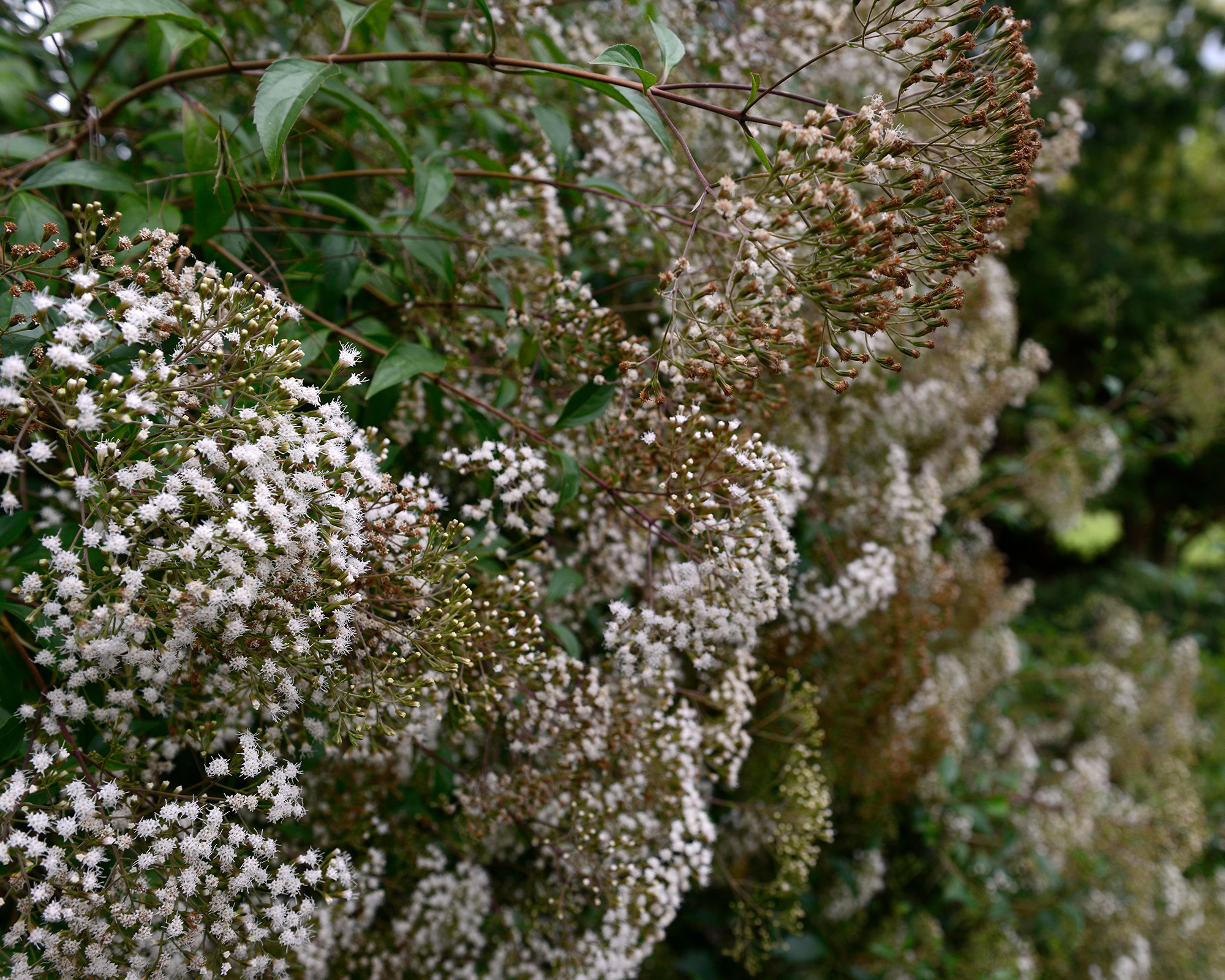
- Hardiness: USDA 9b/10a
- Height: 5ft (1.5m)
- Spread: 4ft (1.2m)
- Best for: Attracting bees and butterflies
The privet-leaved ligustrina is one of the best evergreen shrubs whose flattened heads of fragrant, fluffy-looking white flowers open in late summer and bloom on through fall. Standing out against the shapely dome of dark foliage, they add freshness and attract many late-flying insects.
Plants appreciate a sheltered site, perhaps against a sunny wall or fence protected from cold winds and severe frosts. Add new plants in spring and take cuttings from plants in case replacements are needed following a hard winter.
As part of your fall gardening checklist, add a dry mulch to these plants to help them to weather the cold.
2. Anemone x hybrida ‘Königin Charlotte’

- Hardiness: USDA 6a-1
- Height: 5ft (1.5m)
- Spread: 2ft (60cm)
- Best for: Mixed borders
A stand of Japanese wind flowers bring color from late summer to mid fall, their tall stems topped by large, shallowly cup-shaped blooms. White-flowered cultivars are elegant but the rich pink semi-double blooms of ‘Queen Charlotte’ are a favorite in borders and fall planter ideas.
These durable, drought tolerant herbaceous perennial anemones send woody tap roots deep into the ground and can run a bit, a habit I find useful rather than irritating. British nurserywoman and author Claire Austin describes the Japanese anemone as 'an indispensable plant that can be left untouched for years'.
3. Calluna vulgaris Garden Girls Series
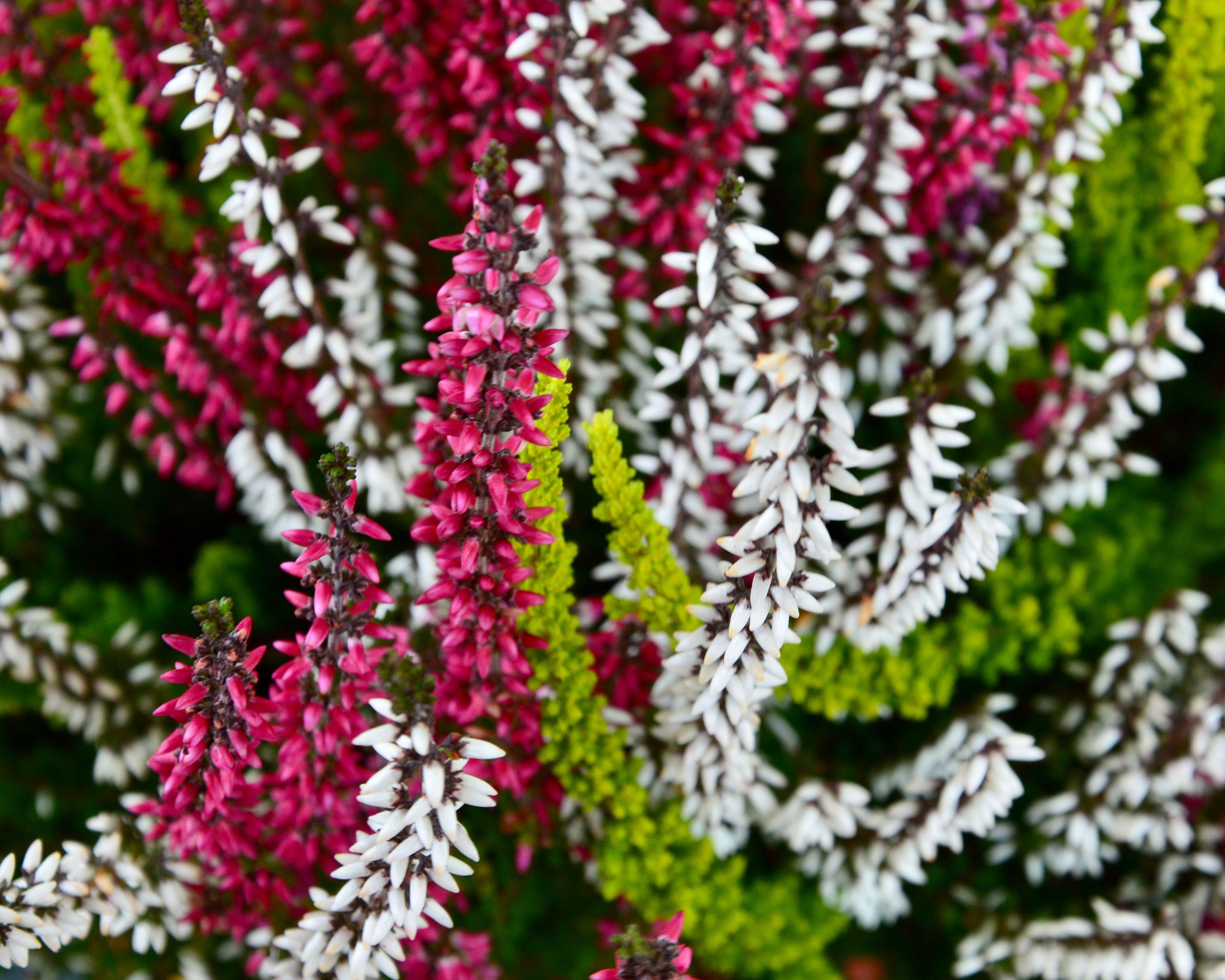
- Hardiness: USDA 6a-1
- Height: 20in (50cm)
- Spread: 20in (50cm)
- Best for: Containers
The many cultivars of Calluna vulgaris or Scots heather make for some of the best ground cover plants. They are low, shrubby plants well-known for creating carpets of colorful leaves and flowers. The Garden Girls Series are bud-bloomers, their stems clad with pointed flower buds in white, pink or red.
These never fully open, are therefore not pollinated and as a result tend to be long lasting, remaining on the plants throughout fall. These winter heathers need an acidic soil, easily provided by planting them in bowl-shaped containers of ericaceous compost. Shear back after flowering has finished to keep plants compact.
4. Chinese plumbago
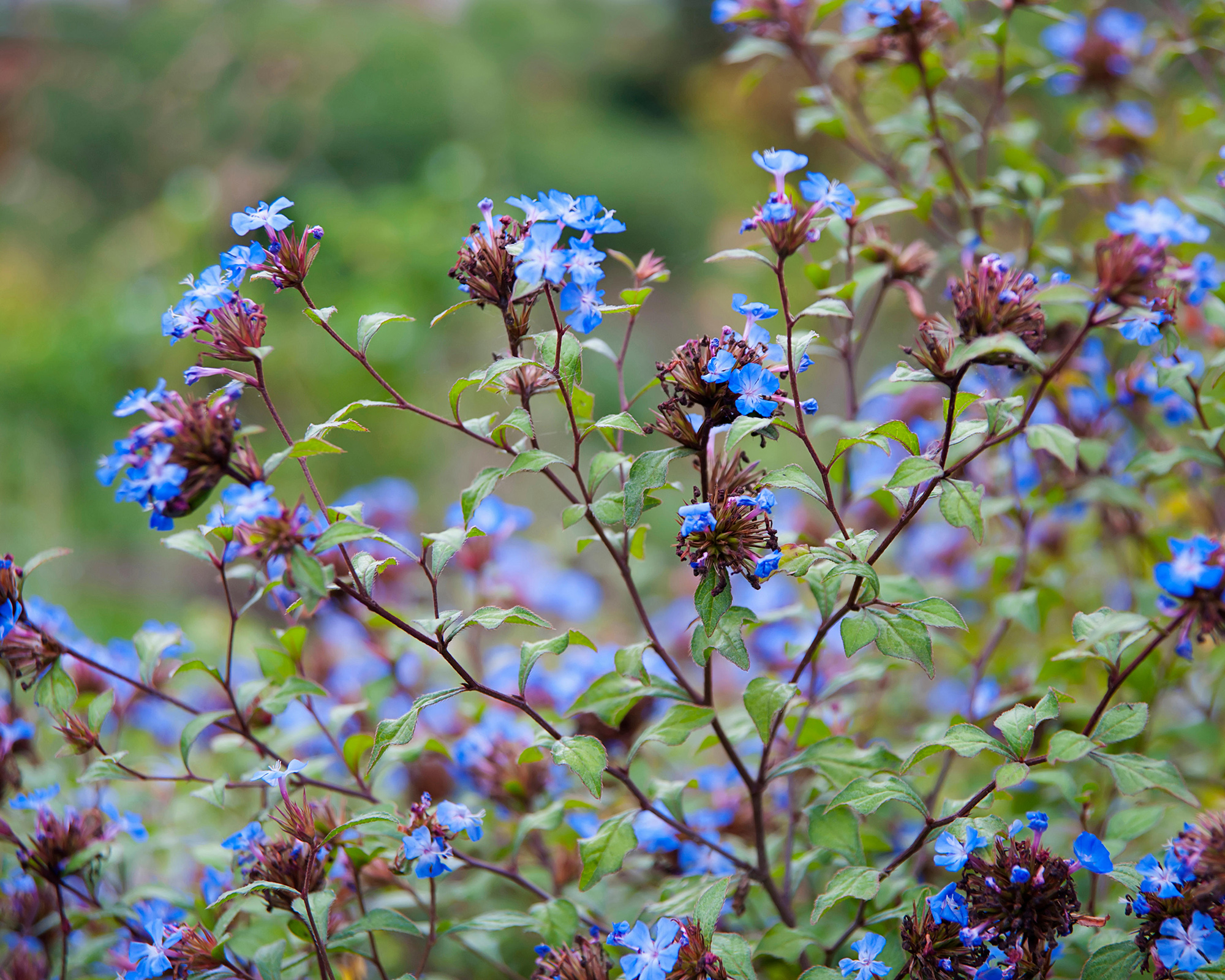
- Hardiness: USDA 6-9
- Height: 3ft (1m)
- Spread: 5ft (1.5m)
- Best for: Low maintenance
Low-maintenance ground-cover plants make gardening easier because they knit together, protecting the soil from evaporation of water and suppressing weeds. Yet there’s no reason low-maintenance should be low-interest.
To brighten the season, the small, shrubby Chinese plumbago are winning fall flowering plants. As the days grow shorter and temperatures cooler, this lowly shrub opens its clear blue flowers as foliage starts to turn red.
The blooms are one of the best plants for pollinators and make good cut flowers for posie vases. This unfussy, hardy plumbago will grow in sun or partial shade and most well-drained soils. Thin out a few older stems in spring.
- Buy Chinese plumbago in the US: view at Monrovia
- Buy Chinese plumbago in the UK: view at Gardening Express
5. Chrysanthemum ‘Duchess of Edinburgh'

- Hardiness: USDA 8b/9a
- Height: 3ft (1m)
- Spread: 3ft (1m)
- Best for: Cut flower
Where bold autumn flower color is needed, hardy chrysanths are a good choice for fall flowering plants. There is a range of shades and heights but all brighten borders and provide plenty of cut blooms with that unique fall chrysanthemum scent.
Warm yellow, russet, orange and red flower colors particularly suit the season. ‘Duchesse of Edinburgh’ produces double red-blooms and may need staking. Bred to be left in the ground all year, these chrysanthemums benefit from a deep winter mulch.
In colder regions lift, and box the roots and crowns, and store to protect plants from frost, ready for taking cuttings in spring.
6. Helenium ‘Sahin’s Early Flowerer’

- Hardiness: USDA 6a-1
- Height: 3ft (1m)
- Spread: 18in (45cm)
- Best for: Border color
The variable yellow, orange and russet shades of this sneezewort create a lively effect in fall borders. These types of helenium are herbaceous perennials, which produce daisy-like blooms of ray petals surrounding cones of disk flowers. Starting as brown buttons but showing yellow pollen as they open.
Plant in sun and grow in good moist, well-drained soil for the best results. Deadheading can be a pernickety process, but well worth doing to extend flowering into fall.
Sneezeworts look best as a large group, so take spring basal cuttings from your favorites to grow on in pots and plant out for masses of daisies.
7. Hesperantha coccinea ‘Jennifer’

- Hardiness: USDA 8b/9a
- Height: 2ft (60cm)
- Spread: 1ft (30cm)
- Best for: Fall flower borders
The grassy foliage of crimson flag lilies can look untidy while they are biding their time and building up to flower, but are worth the wait. In mid to late fall when floral surprises are few on the ground, fresh buds open to cupped flowers with silky petals, in a color range of white and shades of pink including rich salmon.
My favorites are the clear pinks like ‘Jennifer’. Plant these perennials into moist, well-drained soil in a sunny position and deadheading flowers to encourage more. When necessary, divide plants in spring.
8. Helianthus salicifolius
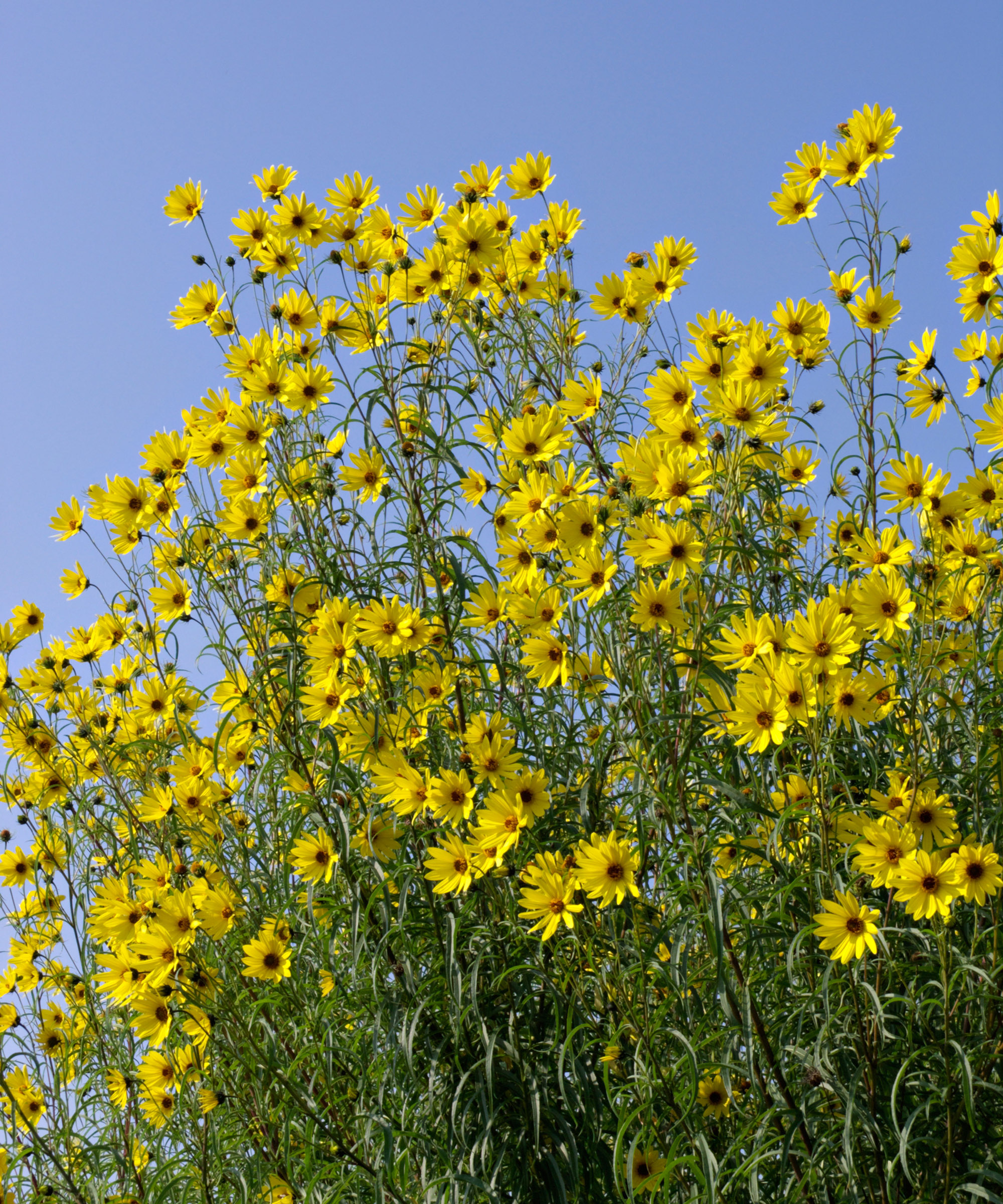
- Hardiness: USDA 7b/8a
- Height: 8ft (2.5m)
- Spread: 3ft (1m)
- Best for: Adding height
For much of the summer it is easy to forget you have a willow-leaved sunflower in your border. Also known as column flower or graceful sunflower, this perennial sends its stems gradually upwards, until by late summer they are topped by mops of fresh green resembling chartreuse fireworks.
The finale in late autumn is an eruption of yellow flower daisies much like the blooms of Jerusalem artichoke (Helianthus tuberosus).
Plants enjoy a sunny position in moist but well-drained soil and thrive well on chalky soils. Divide clumps after flowering every few years in spring.
- Buy Helianthus salicifolius in the US: view at Monrovia
- Buy Helianthus salicifolius in the UK: view at Amazon
9. Hydrangea paniculata Pinky-Winky
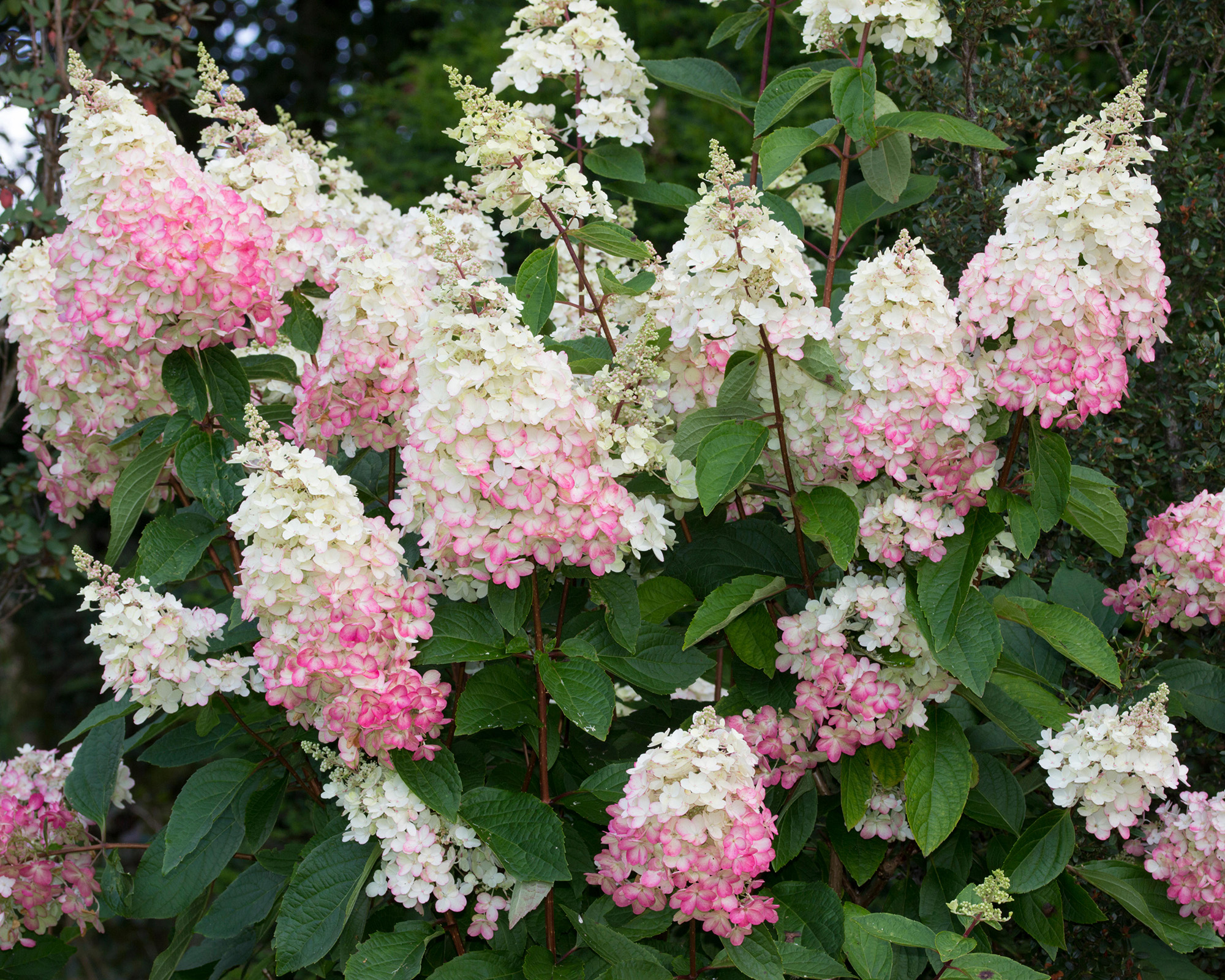
- Hardiness: USDA 7b/8a
- Height: 5ft (1.5m)
- Spread: 6ft (1.8m)
- Best for: A specimen plant
Even after flowering, shrubby hydrangea varieties continue to look great into fall, when heads of showy infertile flowers mellow into a spangle of soft hues perfect for the season.
The paniculate hydrangea from China and Japan flower late and of the many cultivars, ‘Pinky Winky’ is one of the showiest. Forming a compact, upright shrub whose tapering flower panicles are lime green, maturing to white and then pink, so that cones of all three colors decorate the plants.
Plant in sun or partial shade in fertile, humus rich soil. Prune hydrangeas hard and apply a shrub fertilizer every spring.
- Buy Hydrangea paniculata in the US: view at Amazon
- Buy Hydrangea paniculata in the UK: view at Crocus
10. Kniphofia Poco Sunset
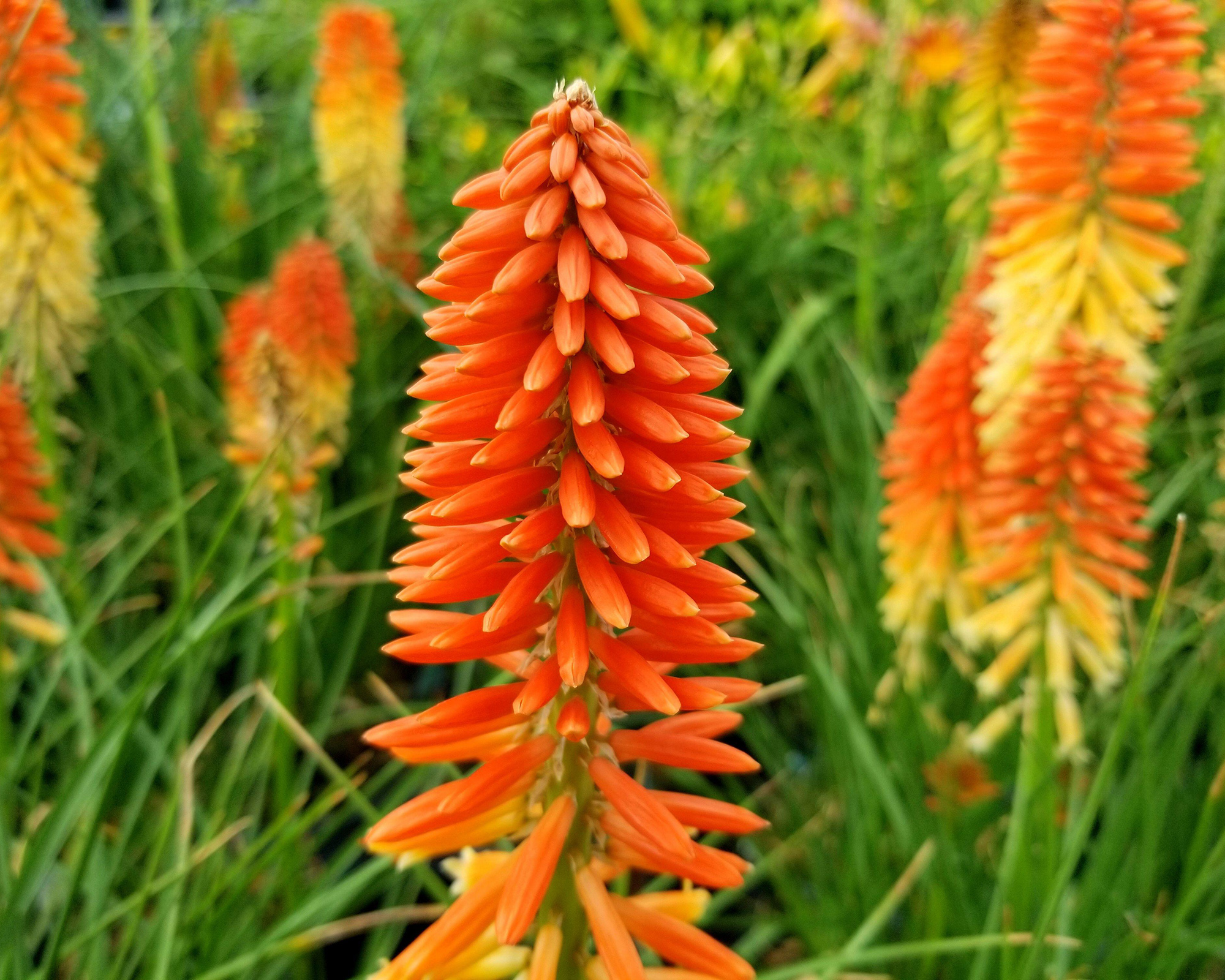
- Hardiness: USDA 7b/8a
- Height: 32in (80cm)
- Spread: 2ft (60cm)
- Best for: Containers, narrow borders
Most red hot poker varieties open their fiery blooms in summer, with many continuing into autumn as fall flowers, and just a few stoking the late show up until the first frosts.
Herbaceous perennial Poco Sunset combines the good attributes of both late flowering and neat growth, producing a tuft of grassy foliage joined by plenty of bright tangerine pokers attractive to pollinating insects.
Drought tolerant plants, unfussy and pest resistant, pokers enjoy any soil including clay as long as the drainage is good. New plants are best added in spring; also the best time for removing old flower stems and tatty foliage.
- Buy Kniphofia Poco Sunset in the US: view at Monrovia
- Buy Kniphofia Poco Sunset in the UK: view at Crocus
11. Nerine bowdenii
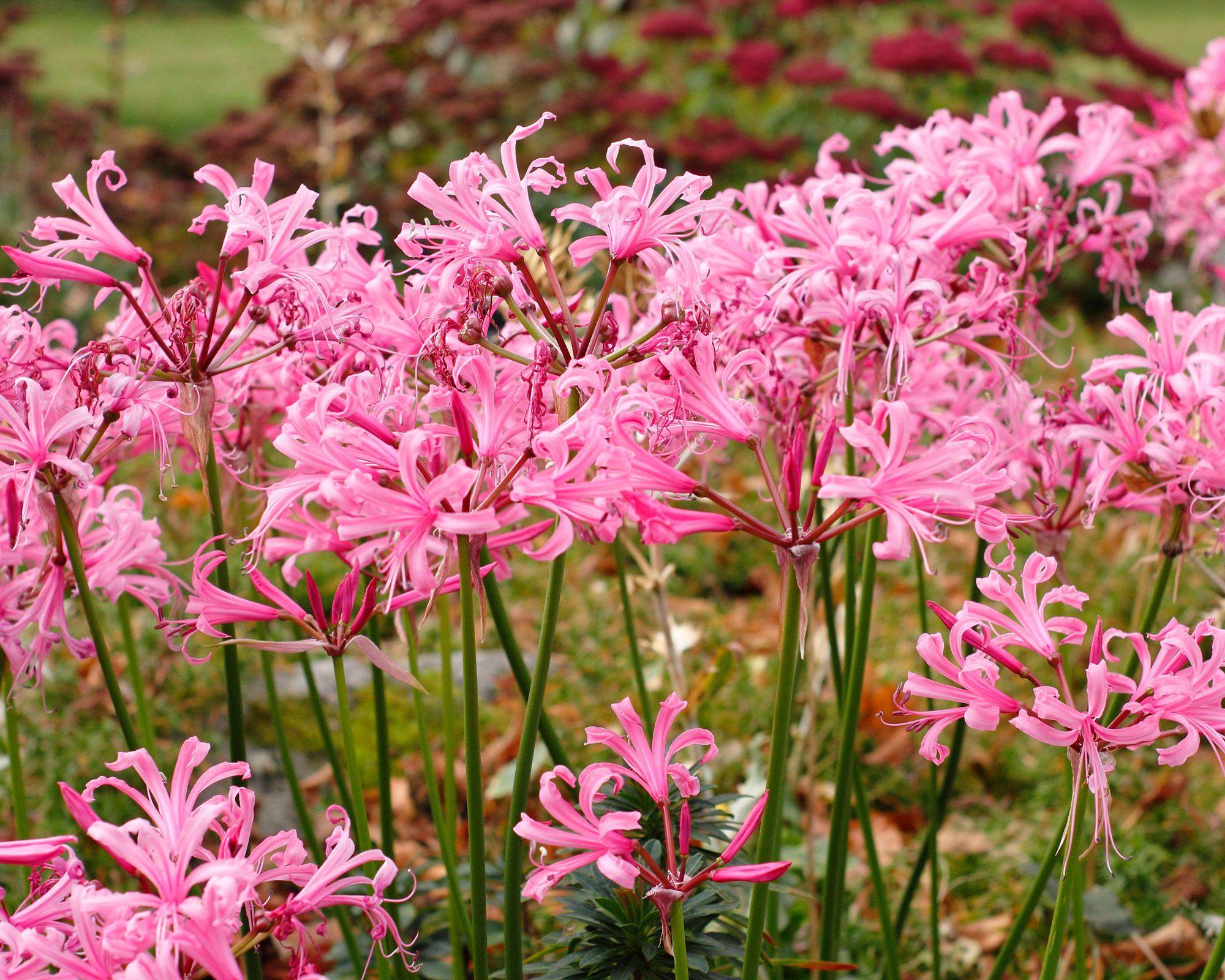
- Hardiness: USDA 7b/8a
- Height: 18in (45cm)
- Spread: 6in (15cm)
- Best for: The base of a warm wall
The South African Bowden lily loves to grow undisturbed in a sunny position, their bulbs jostling for space at the surface and soaking up sun. Naked flower stems of glistening pink flowers open in mid to late fall and are good for cutting.
Strappy leaves don’t emerge until late winter or spring, before dying back in summer. Plant bulbs in spring with noses showing in a sheltered, sunny site in well-drained soil.
Don’t let other plants crown them, don’t feed them and they will settle and bloom. In colder regions, plant flowers in pots to bring under cover for winter.
12. Ratibida pinnata
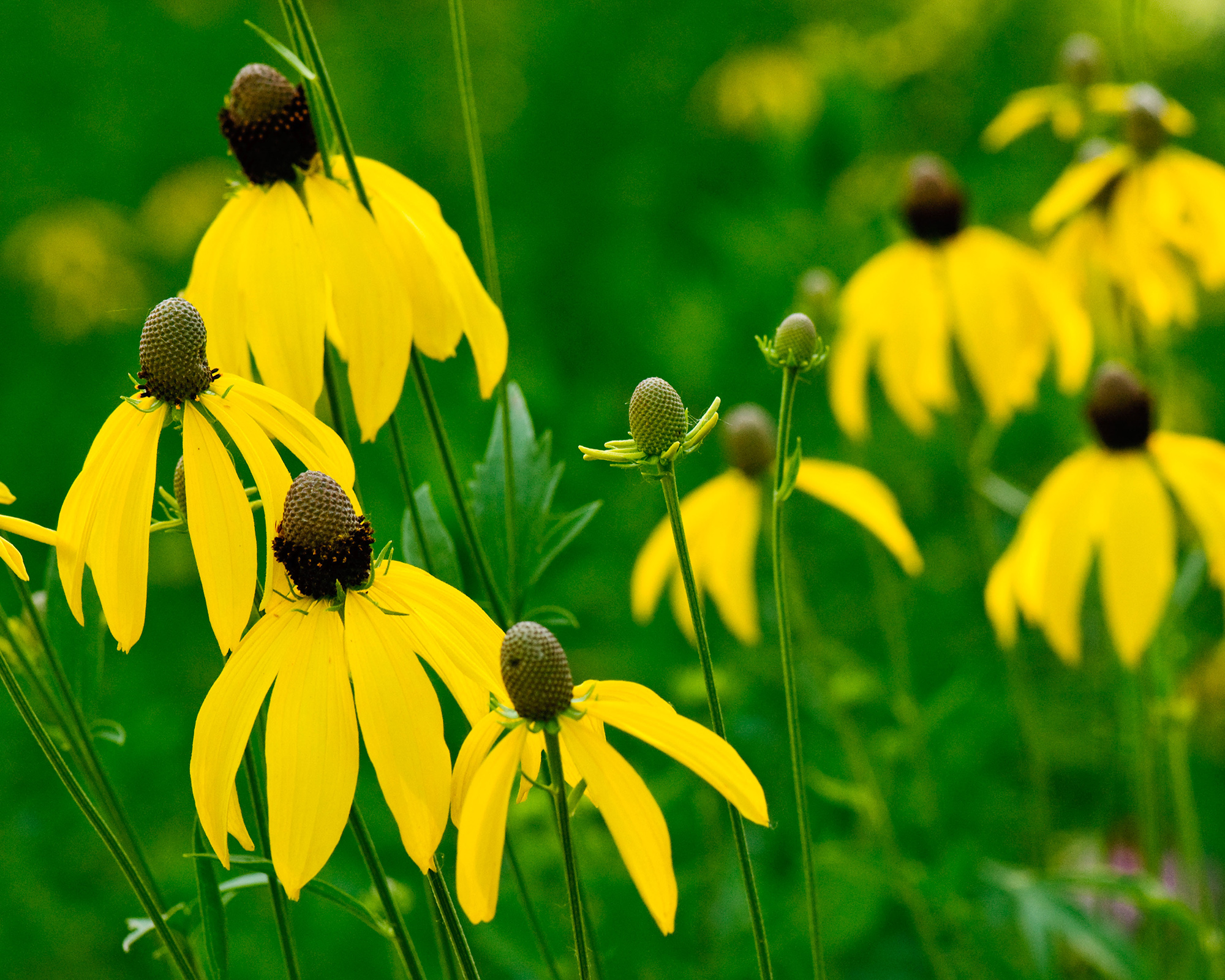
- Hardiness: USDA 6b/7a
- Height: 4ft (1.2m)
- Spread: 18in (45cm)
- Best for: Prairie plantings
For a burst of yellow or gold fall flowers, there are plenty of hardy perennial coneflowers to choose from. Rudbeckia fulgida var.deamii or R.f.var sullivantii ‘Goldsturm’ create low mounds of yellow-orange daisies ideal for the front of a border but for the middle ground, choose drooping cone flower Ratibida pinnata.
Generous 5in (12cm) wide flower heads have swept back yellow petals surrounding prominent central cones. The plants will need supports while growing but suit the abundance of fall.
Plant these drought-tolerant daisies in sun and well-drained soil. Try dividing perennials and replanting every few years in spring.
13. Salvia uliginosa

- Hardiness: USDA 8b/9a
- Height: 4ft (1.2m)
- Spread: 30in (75cm)
- Best for: Pollinators
The salvia tribe is well-known for its late season flower power. From the swamps and marshes of Brazil, Argentina and Uruguay, azure-flowered herbaceous perennial bog sage is the perfect choice for moist soil and streamside planting.
White throat markings guide bees to find nectar and pollen. Blogger and author of Native Plant Gardening, Haeley Giambalvo sings the praises of the very different small shrubby Salvia greggii:
'When I look at my native plant garden I want to see blooms! The bloom periods of so many flowering plants can be fleeting especially during the hot Texas summer. However that is not the case with Autumn Sage. Despite its name, its bloom time spans from spring all the way through autumn. By periodically pinching off its tips you will encourage even more continuous blooms.'
14. Symphyotrichum novae-angliae ‘Harrington’s Pink’
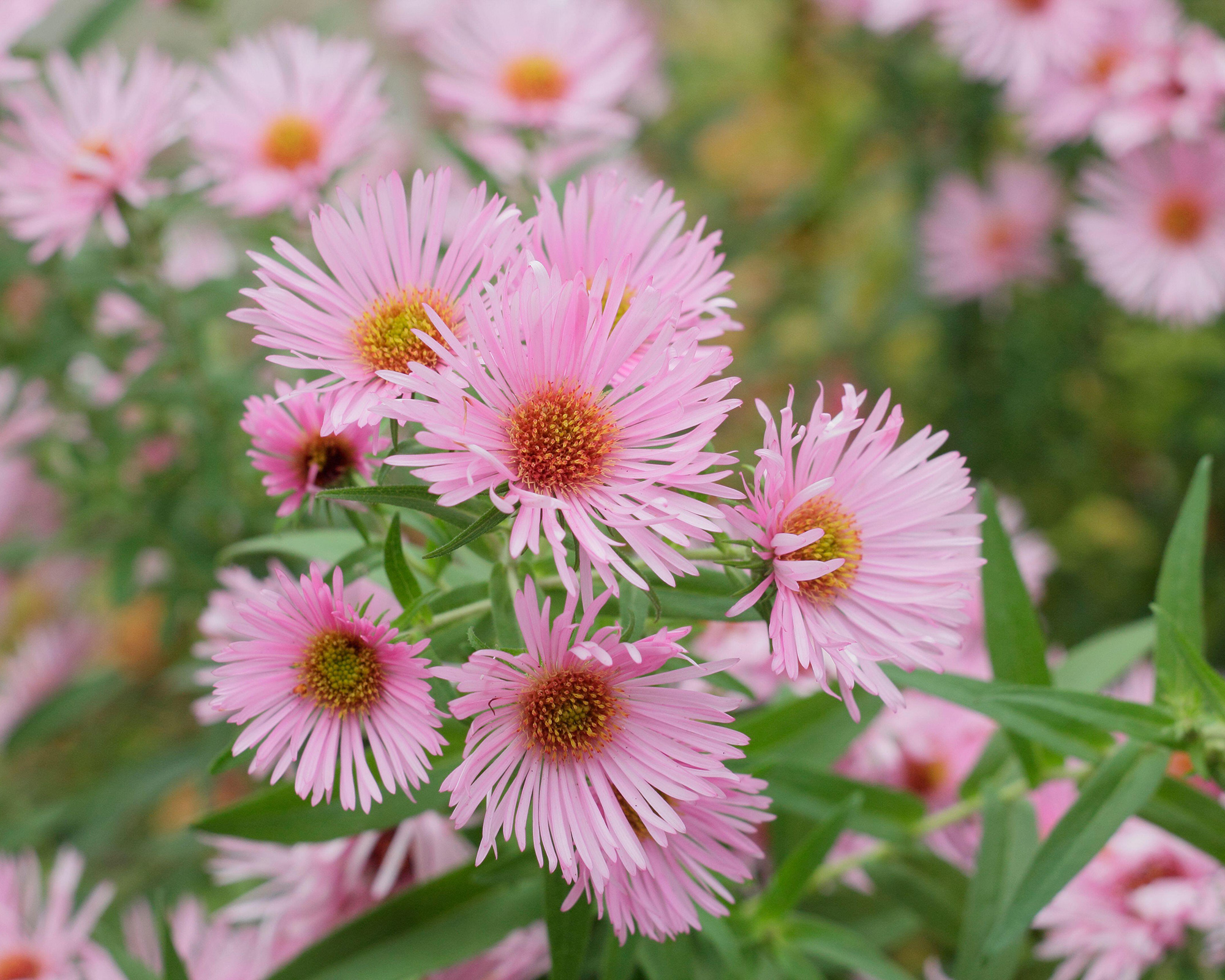
- Hardiness: USDA 6a-1
- Height: 4ft (1.2m)
- Spread: 30in (75cm)
- Best for: Cottage garden color
The New England asters provide jewel-like color late into fall and unlike many of the asters or Michaelmas daisies (cultivars of S. novi-belgii) they rarely suffer from mildew. Their flowers, held in sprays at the stem tops have an engaging fuzziness about them.
Choose richly colored purple-flowered ’James Ritchie’ or ruby ‘Andenken an Alma Potschke’ but I enjoy the light rose of ‘Harrington’s Pink’. Flower stems will push up through fading plants, to flower freshly with ornamental grasses in your garden border planting. They enjoy fertile, moist soil in a sunny position.
What perennials bloom in fall?
Some plants wait until fall because they need to have certain energy reserves in place, before they bloom, or have aligned their life cycle with that of a particular pollinator.
There are many perennials that extend their flowering from summer into early fall (crocosmia varieties and penstemon varieties for instance). But a much smaller number open fresh blooms in mid or late fall.
A top five might include hesperanthera, the goldenrod Solidago rugosa ‘Fireworks’ (also good for cutting), Nerine bowdenii ‘Pink Surprise’, spray Chrysanthemum ‘Spartan Fire’ and Ratibida pinnata.

What's the best flower to plant in the fall?
The best flower is going to be the one that suits your garden the most. I like a fairly wild, loose style of planting and tend to choose taller plants with character, movement and stems I can cut, over those that are compact and mounded.
I think the obedient plant (Physostegia virginiana) fits both categories. This herbaceous perennial will not require staking yet the upright stems clad with ranks of pert rose pink tubular flowers can reach 3ft (1m) tall, with clumps spreading non-invasively by rhizomes.

When should I plant fall flowers?
There is nothing wrong with impulse buys if you want to save money at the garden center, and fall visits to nurseries and shows should result in colorful seasonal souvenirs. Technically, fall flowering plants from pots can be planted out anytime but those sent with wrapped roots through the post should go in from fall to spring.
Make sure both rootballs and soil are moist (water planting holes if necessary) and avoid planting in late fall where soils are likely to be wet and cold during winter. Instead, wait until spring – also a better time for plants that are slightly tender.
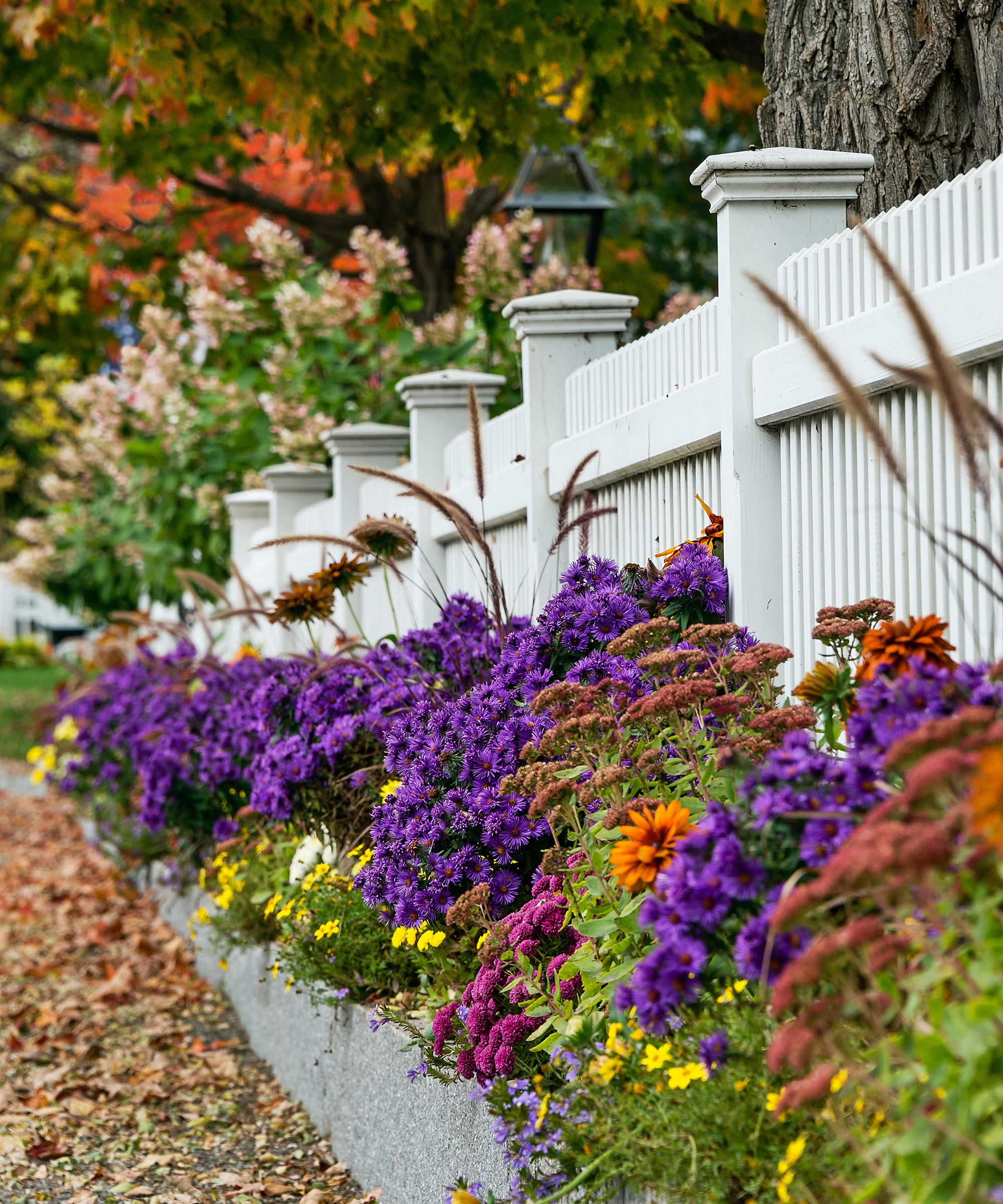
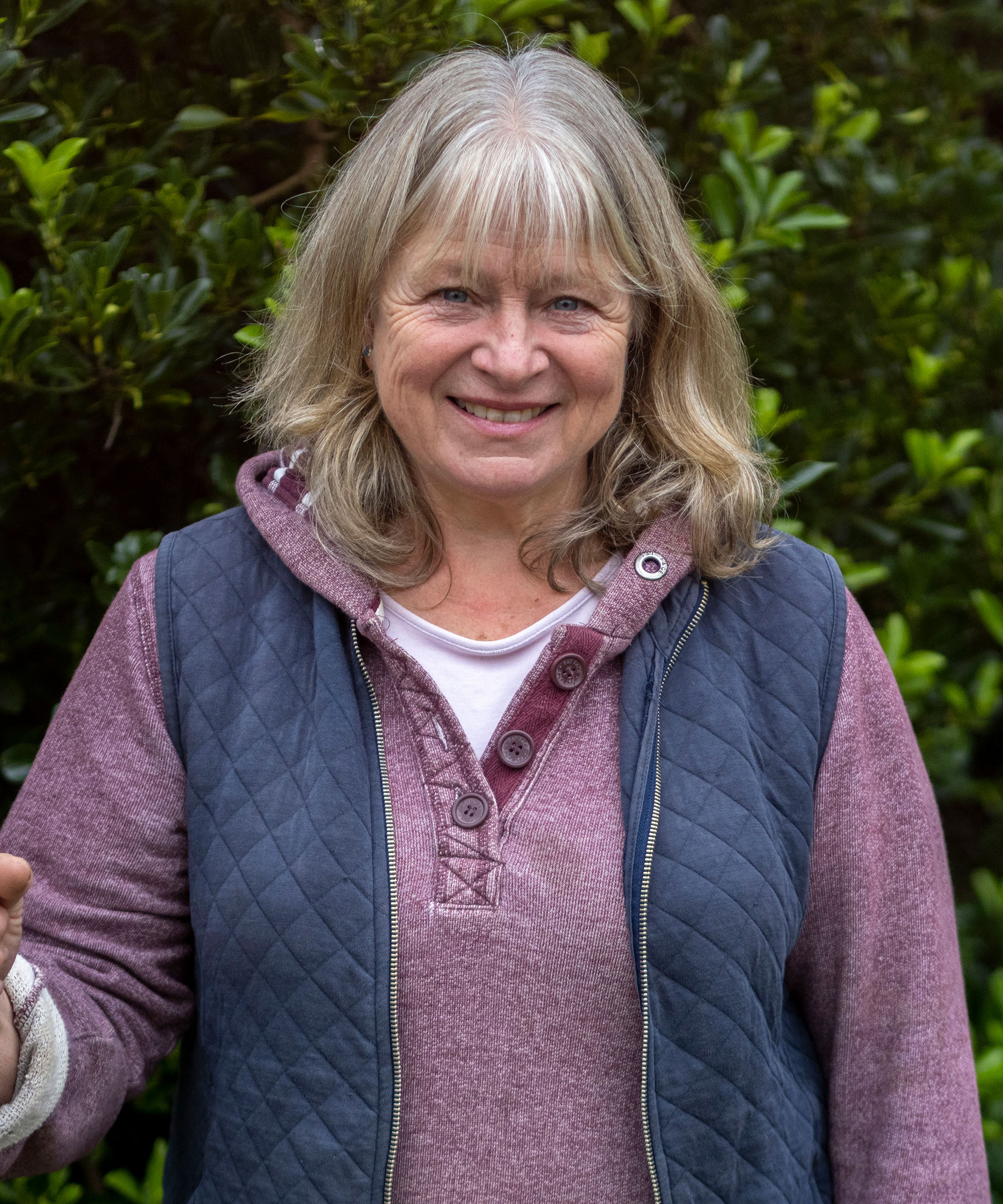
Having trained at Kew Gardens in London, worked in parks department nurseries and as Glasshouse Supervisor at RHS Wisley, Anne has been a freelance horticulturist since 1986. Anne writes for Amateur Gardening and has been a regular panelist on BBC Radio 4’s Gardeners’ Question Time for 27 years. A large plot full of wildlife habitats, edible and ornamental plants is Anne’s workshop and inspiration.
